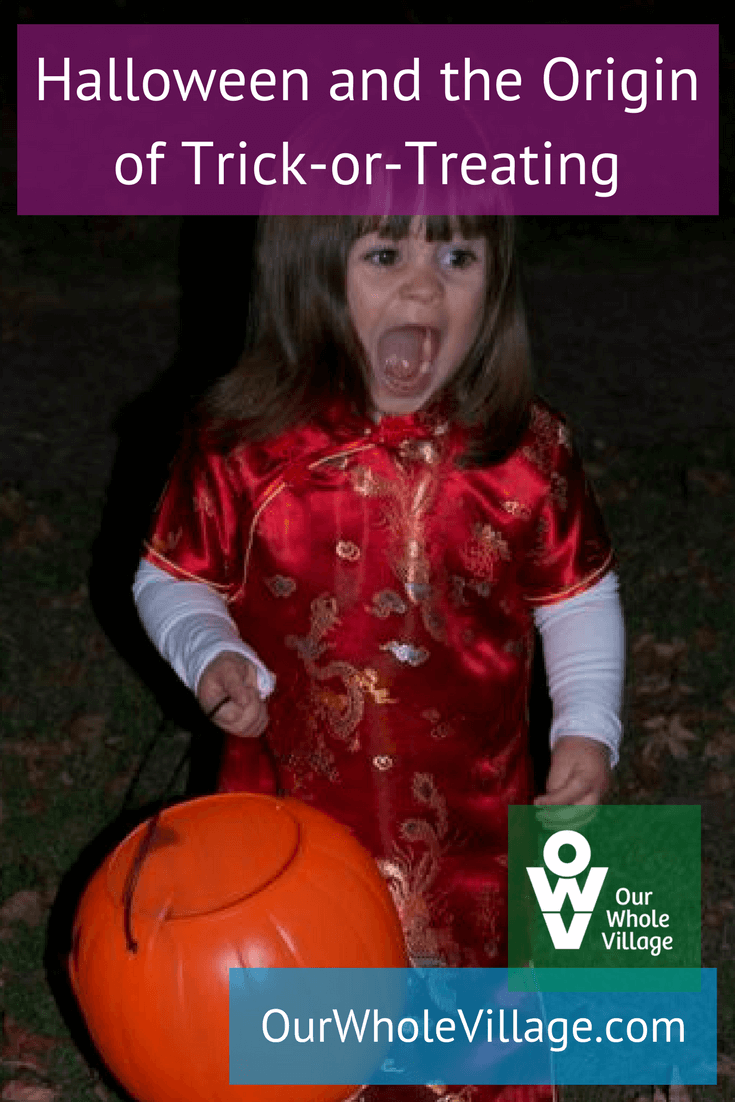World Stories: Halloween and the Origin of Trick-or-Treating
ABOUT
At Our Whole Village, we plan meaningful vacations for families who want to create lifelong memories and show their kids the world in a more conscious and intentional manner.
WORK WITH US
We help families take meaningful vacations so that they can escape everyday life, show their kids the world and make lifelong memories - with care, confidence and peace of mind.
THE BEST FAMILY VACATIONS BY AGE
Your (free) guide to the top travel destinations for families with babies, teens and everyone in between.
DOWNLOAD NOW
ABOUT US
October 29, 2016
Halloween is believed to have originated with the ancient Celtic harvest festival of Samhain, when people would light bonfires, leave food and wine on their doorsteps to ward off the departed, and wear costumes to avoid being recognized by these ghosts.
In the 8th century, the Christian church instituted All Saints’ Day, also called All Hallows’, hence the name “Halloween”. In many parts of the world, the Christian religious observances of All Hallows’ Eve, including attending church services or lighting candles on the graves of the dead, remain popular. Over time, however, Halloween evolved into a secular celebration marked by kid-friendly activities, such as dressing up, carving pumpkins into jack-o’-lanterns, telling scary stories around bonfires, apple bobbing and visiting haunted houses.
But no activity is more cherished by the little ones than trick-or-treating.
Trick-or-treaters dress up in costumes and go from house to house, saying “Trick or treat?”, the word “trick” used as a “threat” to perform a prank if no treat is given.
The practice was once much more about the pranking, but today it is all about the candy. Halloween is the second most commercial holiday in the US after Christmas, and Americans spend over 6 billion dollars annually, over 2.5 billion on candy alone.
Trick-or-treating is thought to have originated from the practices of souling and guising, both common in Medieval England.
Souling refers to when poor citizens would beg for food and families would give them pastries called “soul cakes” in return for their promise to pray for the family’s dead relatives and friends.
When “guising”, young people would dress up and go from door to door performing songs, reciting poetry or telling jokes in exchange for food or coins.
Want to expand your Halloween fun beyond trick-or-treating? Here are a few resources:
MAKE:
SING:
LEARN:

OUR SERVICES
HOME
COPYRIGHT © OUR WHOLE VILLAGE 2021
DESIGN BY GIRLBOSS DESIGNER | CUSTOMIZED BY ALEX COLLIER DESIGN
about
TRAVEL SERVICES
DESTINATIONS
BLOG
PLAN A TRIP
FREE TRAVEL GUIDE
TERMS AND CONDITIONS
hello@ourwholevillage.com
+1 305 432 2612